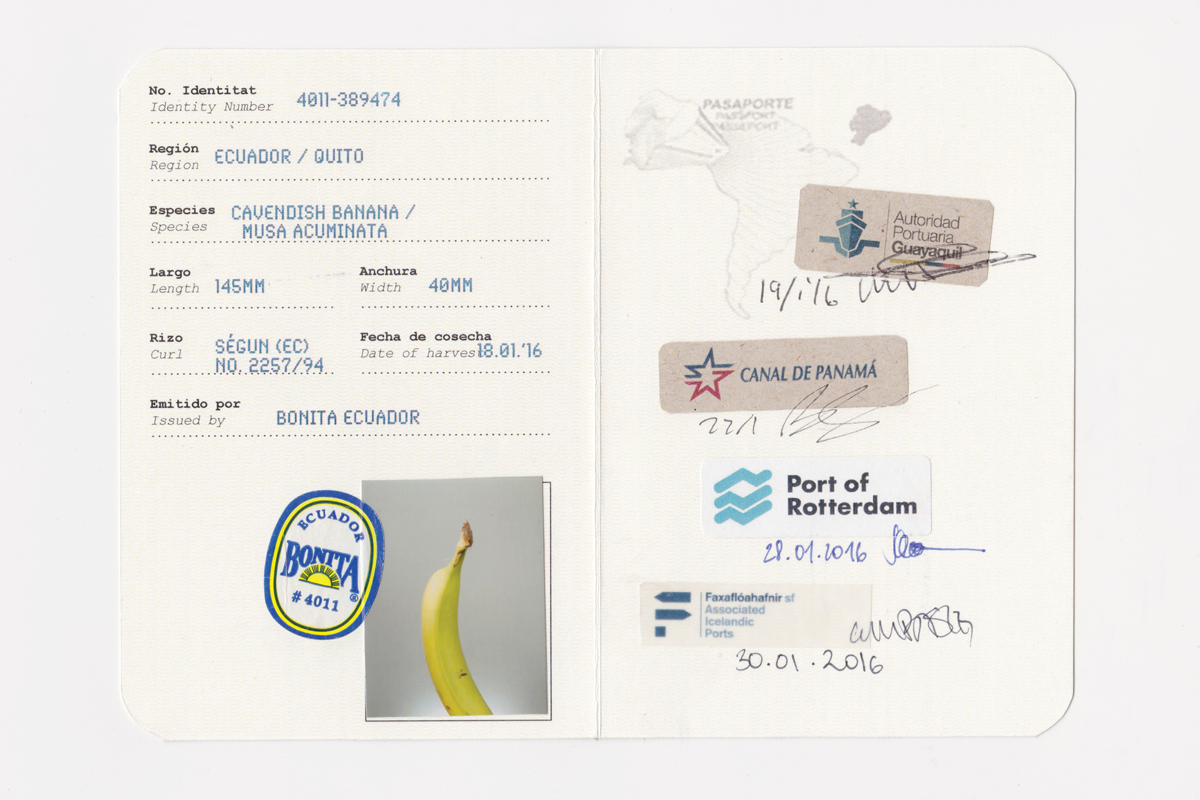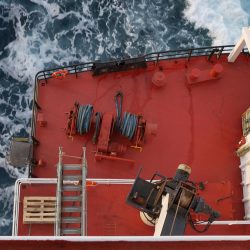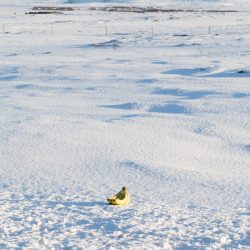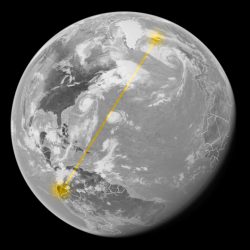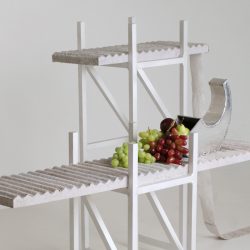IN THE TIME WHEN EVEN EVERYDAY OBJECTS COME FROM DIFFERENT PARTS OF THE WORLD, banana passport
it makes one wonder how much do the ‘made-in’ labels from countries across the globe actually have anything to do with a product’s country of origin? At DesignMarch held in Iceland in late March of 2018, Johanna Seelemann and Björn Steinar, two designers from Iceland Academy of the Arts questioned the ‘made-in’ labels before beginning to investigate the complexity of the transportation process of everyday items by creating a simulated identity and passport for an ordinary ‘banana’ before starting to trace its 14-day journey from Ecuador through Panama and Rotterdam before reaching Iceland as its final destination. The project was later developed under the name ‘Cargo’ with an exhibition that featured a series of installations with aluminum (Iceland’s important export product) being used as the key material. The work contains the functionality of both a commercial product and a label that documents its own story. The interesting thing about the project is not only the way it broadens our perspective towards the complicated transportation of goods that may affect the way we live unknowingly, but also that, at the end of the day, it makes us question how important the ‘made-in’ label really is or whether it’s just something created for our own gratification of getting to eat or use something from a certain country.
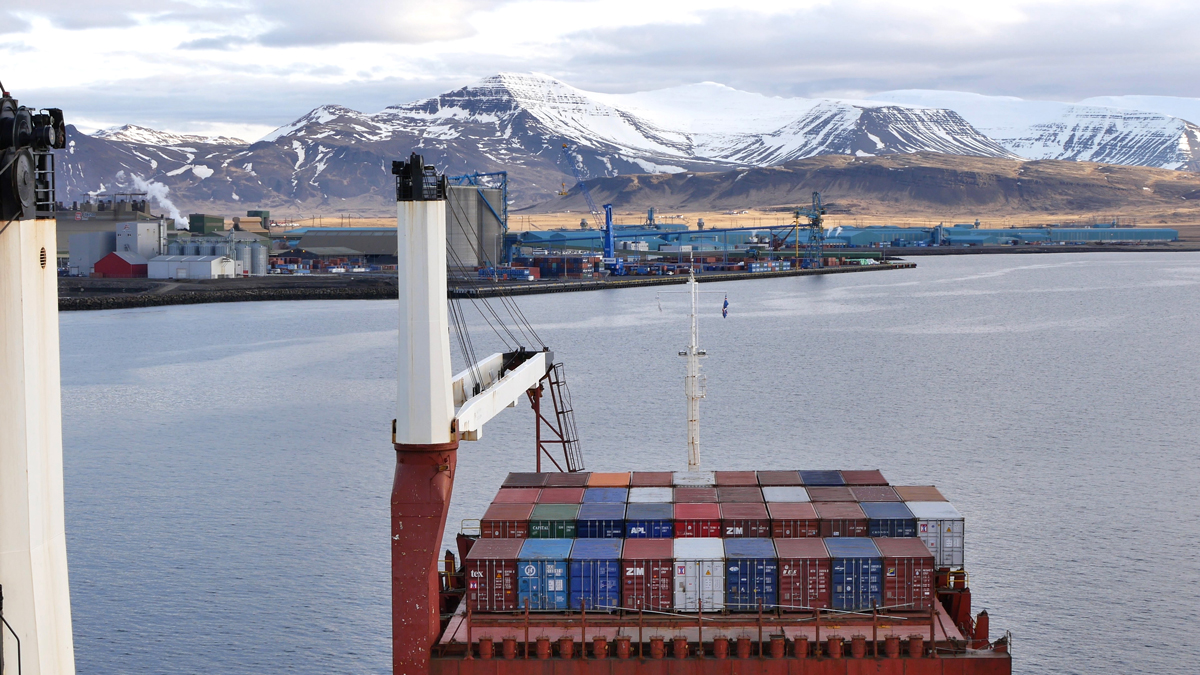
ในยุคที่สิ่งของรอบตัวมาจากทุกหนทุกแห่งทั่วโลก เคยสงสัยกันไหมว่าฉลากที่ระบุว่า ‘made-in’ จากประเทศนั้นประเทศนี้ มีเส้นทางการขนส่งที่เกี่ยวโยงกับประเทศต้นทางนั้นจริงๆ สักแค่ไหนกัน ในงาน DesignMarch ที่ไอซ์แลนด์เมื่อปลายเดือนมีนาคมที่ผ่านมา Johanna Seelemann และ BjÖrn Steinar สองนักออกแบบจาก Iceland Academy of the Arts ตั้งคำถามถึงการติดฉลาก made-in ที่ว่านี้ และเริ่มต้นศึกษาความซับซ้อนของเบื้องหลังการขนส่งบรรดาของใช้ในชีวิตประจำวัน ด้วยการจำลองตัวตนและพาสปอร์ตให้กับ “กล้วย” ธรรมดาๆ หนึ่งใบ ก่อนที่จะติดตามร่องรอยการเดินทางตลอด 14 วัน ของมันจากเอกวาดอร์ ผ่านปานามา รอตเตอร์ดัม จนมาสิ้นสุดที่ไอซ์แลนด์ และพัฒนาโครงการต่อในชื่อ Cargo ที่นำสินค้าส่งออกของไอซ์แลนด์อย่างอะลูมิเนียมมาออกแบบเป็นอินสตอลเลชั่น และให้มันเป็นทั้งผลิตภัณฑ์และฉลากที่บันทึกเรื่องราวในตัวของมันเองความน่าสนใจของโปรเจ็คต์นี้ นอกจากเราจะได้เปิดมุมมองที่กว้างขึ้นเกี่ยวกับของใช้ธรรมดาๆ รอบตัวและตั้งคำถามถึงฉลาก made-in แล้ว มันยังช่วยให้เห็นภาพที่ชัดขึ้นของความซับซ้อนของระบบขนส่งสินค้า ที่ลึกๆ แล้วกระทบกับการใช้ชีวิตของเราอย่างที่เราอาจจะไม่รู้สึกตัวมาก่อน สุดท้ายแล้วฉลาก ‘made-in’ มีความสำคัญแค่ไหน หรือจริงๆ แล้วมันก็เป็นแค่สิ่งที่ถูกสร้างขึ้นเพื่อ “เอาใจ” ว่าเราได้ใช้ได้กินของจากประเทศนั้นประเทศนี้ก็เท่านั้น
TEXT : PAPHOP KERDSUP
PHOTO COURTESY OF JOHANNA SEELEMANN AND BJÖRN STEINAR
johannaseelemann.com/cargo
bjornsteiner.com/cargo

